Honeywell Air Genius 5 (HFD-320) Review
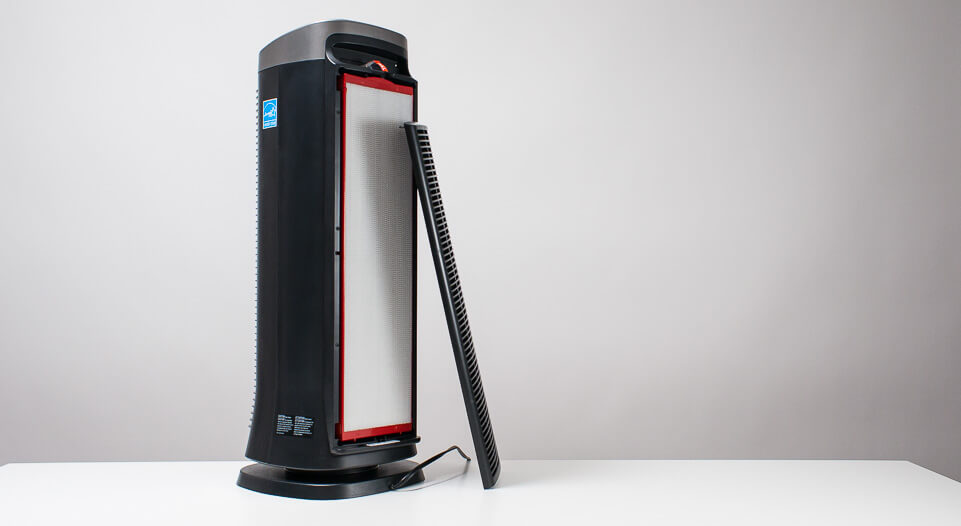
Feature Scores
Pros
- Well built with high quality parts
- Feature rich - timer, 5 fan speeds, mood light – although only mood light can be adjusted (high/low/off). Control panel lights cannot be adjusted or turned off
- Oscillates and has two outlets on the front – works great as fan
Cons
- Outlets on the front of the unit give air direction but also gives noise direction so the unit can be noisy if you sit/stand right in front of it
- No true HEPA filter – permanent filters installed on this unit offer inferior filtration quality
- A bit expensive for a unit at its output with no high quality particle filter
Editor's Score
Quick Facts
| Particle filter type | Permanent washable |
|---|---|
| Gas filter type | Carbon |
| Pre-Filter | Foam pre-filter. Note that foam pre-filter and carbon filter cannot be installed at the same time. |
| Output | Approx. 180 CFM |
| Air Movement | Back grille > carbon OR foam filter > washable particle filter > two outlets behind the grille on the front o fthe unit |
| Number of fan speeds | 3 - low, medium, high |
| Size | 27 in. tall x 10 in. wide x 10 in. deep |
| Weight | 13 lb. |
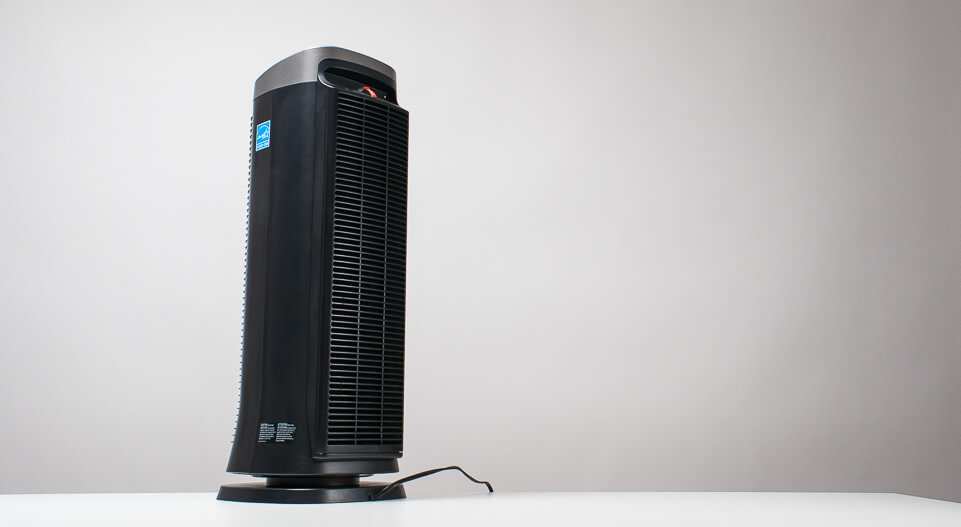
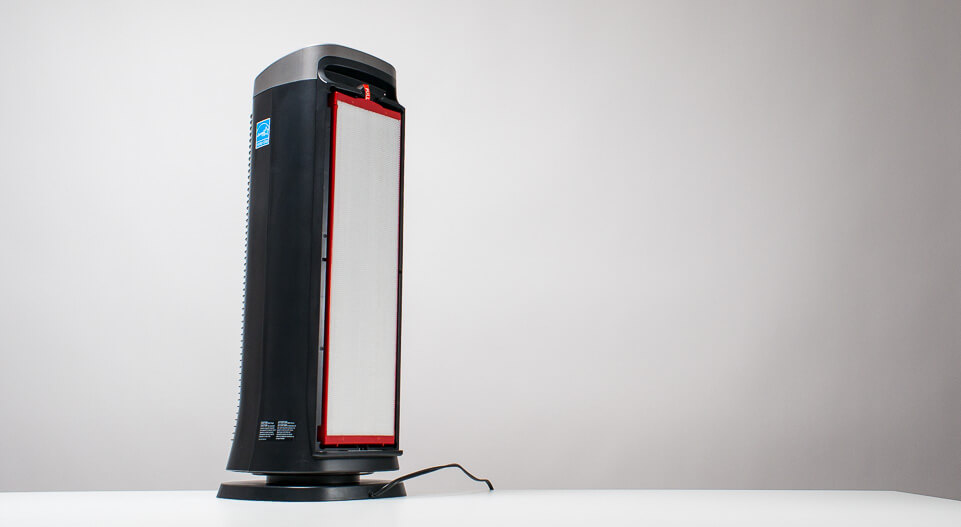
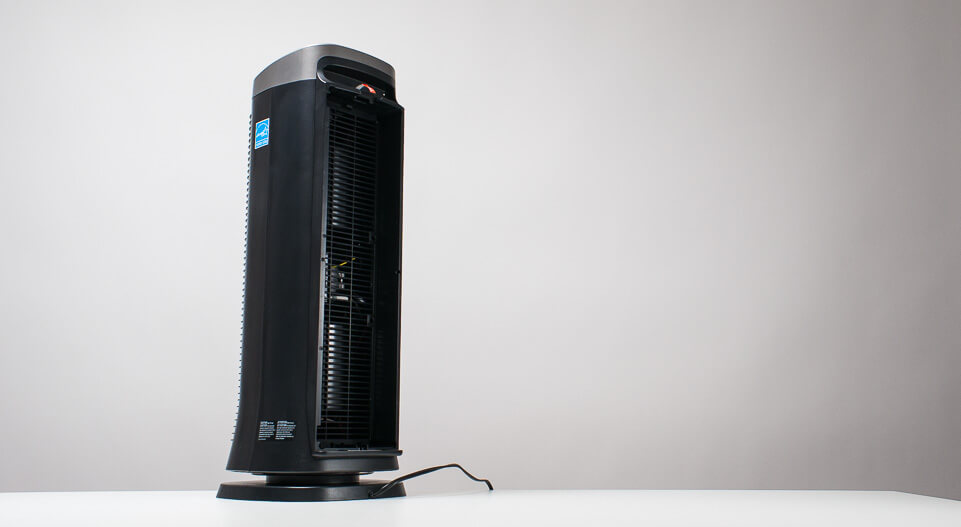
Analysis
A step by step breakdown of the Air Genius 5's performance.
Air Processing Performance
Test Results
In a 150 sq. ft. test environment the Air Genius 5, with an output of approx. 180 CFM, was able to lower particle concentration from 10,000 particles per cubic foot down to 1,000 particles per cubic foot in 16 minutes. For comparison, HEPA equipped 250 CFM units did the same more quickly - in about 10 minutes. HEPA equipped 100 CFM units did the same more slowly - in about 20 to 30 minutes.
The lowest particle concentration the Air Genius 5 was able to achieve was 600 particles per cubic foot. It took an additional 12 minutes to do so (after achieving 1,000 particles per cubic foot in the first 16 minutes). HEPA equipped 250 CFM units were able to achieve a lower concentration – only 100 particles per cubic foot. HEPA equipped 100 CFM units performed similarly to the Air Genius 5. The best units were only able to achieve a concentration of around 500 particles per cubic foot.
Thus, for ultra low room particle concentration, definitely look for a higher CFM unit, even for a small 150 sq. ft. room.
Filter Analysis
Particle Filter
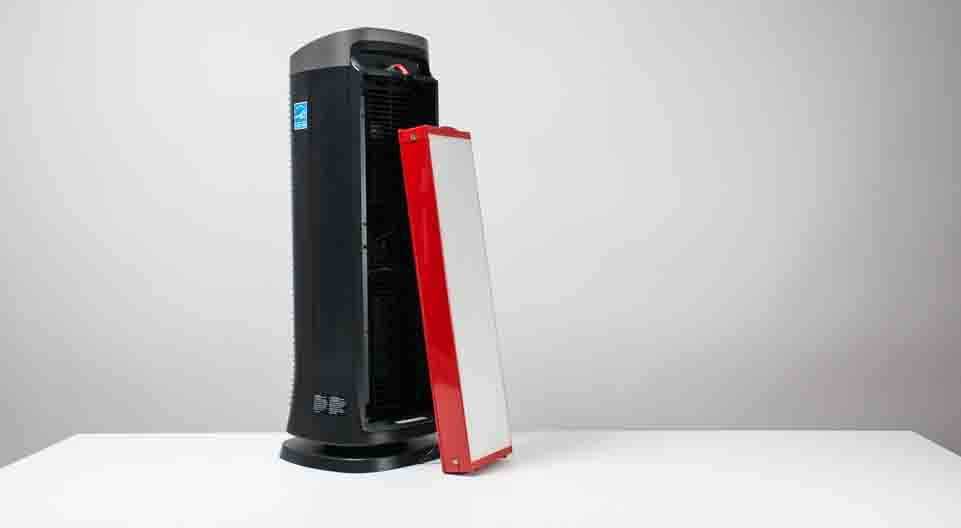
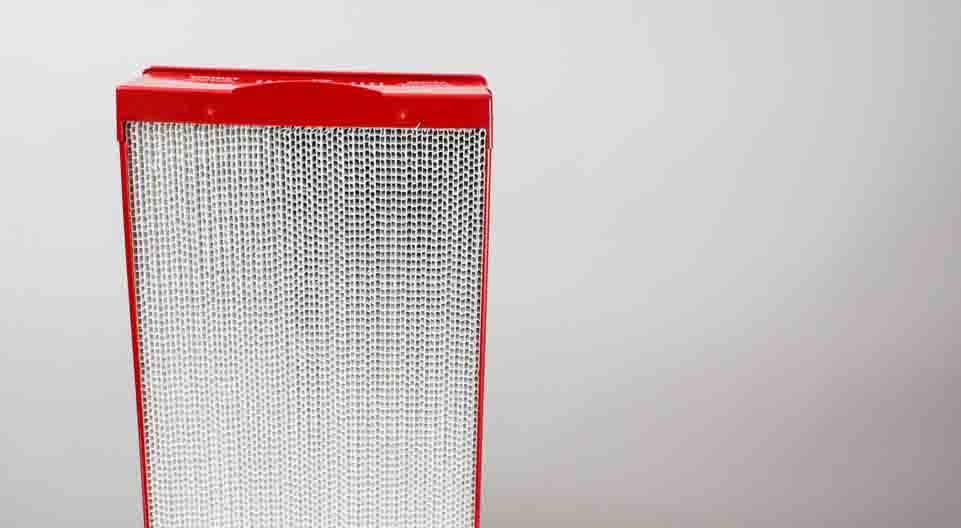
The AirGenius 5 is equipped with a single washable filter to filter out particles like allergens, dust, and mold. Most other air purifiers on the market are equipped with a single replaceable HEPA filter for the same purpose.
Honeywell claims the AirGenius 5’s filter is up to 99.9% efficient removing particles 0.3 microns or larger. This is an improvement over the permanent filters installed in another popular Honeywell permanent filter air purifier – the HFD-120-Q. Honeywell claims the filters installed in the HFD-120-Q are only 99% efficient removing the same size particles using similar filtration technology. HEPA filters are 99.97% efficient removing particles 0.3 microns and larger.
Despite the apparently very small difference in efficiency between the Air Genius 5’s particle filter and HEPA filters, we strongly prefer HEPA filters for filtering out particles. We go over all the reasons why at length in our full guide on permanent filter air purifiers. A couple of highlights from that guide– reasons why we prefer HEPA filters – are below:
Permanent filters cannot be restored to brand new efficacy while HEPA filters absolutely can.
This is important considering the manufacturer specified efficiency ratings given above are for brand new filters.
HEPA filters are replaced when they saturate. A new filter brings the filter back to 100% efficacy – that is to say, 99.97% efficiency.
Permanent filters cannot be replaced to bring them back to 100% efficacy (for the Air Genius 5 this would be 99.9% efficiency). As you continue to wash permanent filters over and over again, a certain percentage of particles are left behind each time and slowly but surely build up over time. The end result is that permanent filters lose efficacy (and therefore efficiency) over time with no means available to replace them.
Permanent filters require more maintenance.
A HEPA filter is simply replaced. Permanent filters have to be washed. This takes time and isn’t the most pleasant experience either. Furthermore, permanent filters have to be washed much more frequently than HEPA filters have to be replaced. HEPA filters pack in a lot of square footage to capture particles. Permanent filters do not have the same level of surface area and therefore saturate more quickly.
Contradictory Test Results
The AirGenius 5 performed exactly like we would expect it to perform for a unit with its level of output (180 CFM). It cleans air slightly more quickly than lower CFM units and slightly slower than higher CFM units. What we did not expect was how it did so despite its lower quality particle filter (its results are just about what we would expect for a unit with the same output but with a high quality HEPA filter, not the lower quality permanent filter installed on the AirGenius 5).
So, how did this happen? How did it perform so well in our testing despite its lower quality filter?
We believe it was primarily due to the following limitations in our testing:
We were limited to testing particles 0.5 microns or larger.
We were unable to measure the concentration of particles smaller than 0.5 microns. Doing so would better show the difference in efficacy between HEPA filters and this unit’s permanent filter.
We were also limited to testing a particular particle type with a particular corresponding size distribution (household dust).
If we were able to test for smaller particles and a wider variety of particles we believe it would better show the difference in performance between a HEPA filter and the AirGenius 5’s permanent filter.
We primarily tested brand new air purifiers with brand new filters.
Again, permanent filters slowly but surely lose efficacy after repeated washing over time. HEPA filters are replaced instead of being washed so they continually offer 99.97% efficiency.
If we were to test a HEPA equipped unit after one year of use (with a brand new filter) and also test this unit with its washed permanent filter after one year of use, test results would look much different. Such a testing scenario and the corresponding results would better demonstrate the superior filtration quality of a HEPA filter in a real life scenario (in which an air purifier isn’t just used when it’s brand new but after several months and eventually years of ownership).
Gas Filter and pre-filter
The AirGenius 5 gives you two options for filtering unwanted gases like VOCs and odors.
Don’t do it:
install a thin foam pre-filter to capture large particles only. In this scenario you don’t ever have to pay for replacement filters. The foam pre-filter can be vacuumed and/or washed like the particle filter. The downside is that the air purifier won’t filter out unwanted gases.
Do it:
install the included carbon filter to filter out gases and also capture large particles. The carbon filter has to be replaced at cost.
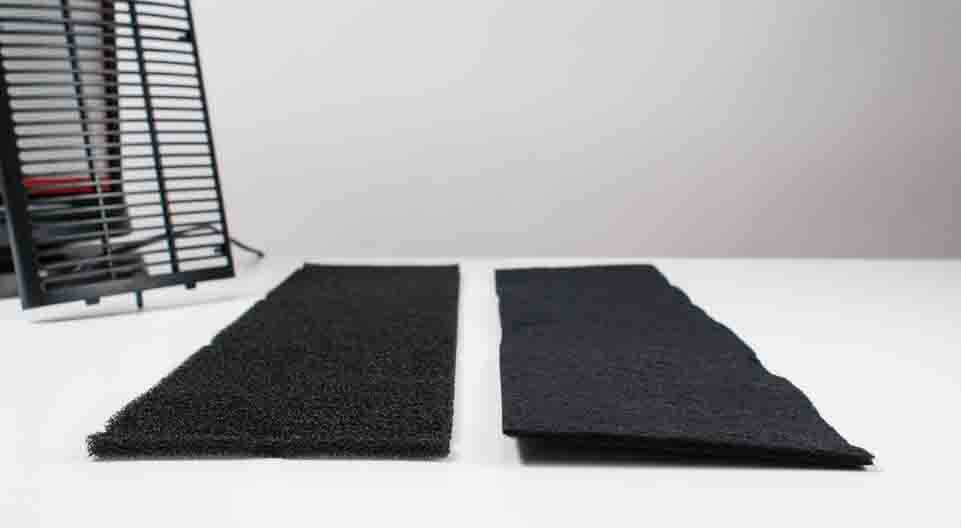
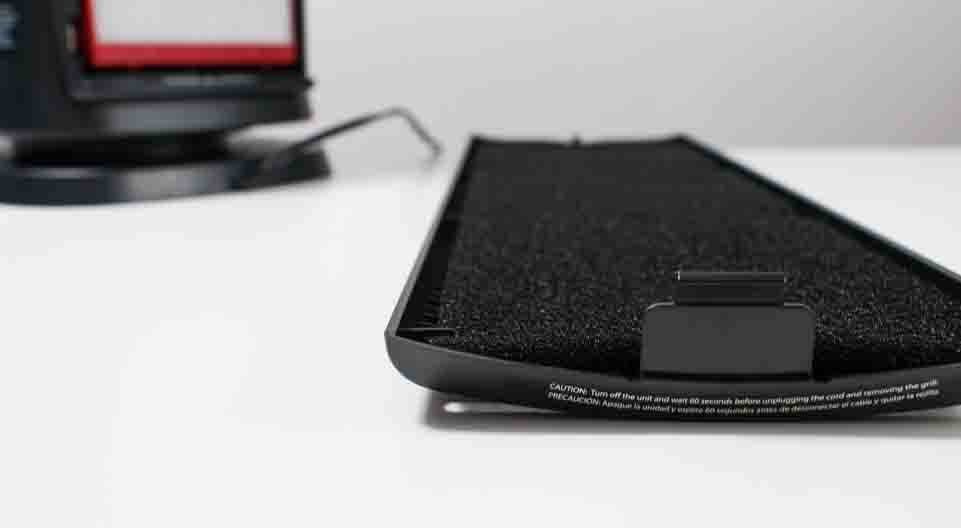
Note that both filters (the foam pre-filter and the carbon filter) cannot be installed simultaneously. Honeywell leaves it up to you, the consumer, to decide whether you value not having to replace any filters (option 1 above) or filtering out gases (option 2 above) the most.
For the price of the AirGenius 5 you can very easily buy a HEPA equipped air purifier. Top rated HEPA units also come with a carbon filter. But instead of making you choose between a washable pre-filter and a carbon filter, you can have both. And in some cases the quality of both of these filters is much better than that of the AirGenius 5.
For example, the Winix 5500-2 comes with a mesh pre-filter that’s a better quality and more effective than the foam pre-filter that you can choose to install in the AirGenius 5. The 5500-2 also comes with a pellet-based carbon filter. The carbon pellets filter unwanted gases much better than the optional carbon filter of the AirGenius 5.
Air Movement
The AirGenius 5 can effectively process about 180 cubic feet of air every minute (180 CFM). This theoretically gives it the ability to process air quickly enough to service a room in the 250 sq. ft. range.
However, keep in mind that it will only be able to properly reduce particle concentration in such a room (250 sq. ft.) when the filter is brand new. After repeated use, filtration quality will be diminished. This won’t impact the area of coverage but it will impact
- how quickly it can reduce particle concentration in the room
- the lower threshold of particle concentration it can achieve in the room
This latter point is especially important. What this means is that the AirGenius 5 won’t be able to properly clean air to the same lower particle concentration threshold as a HEPA equipped unit after repeated use over time.
Energy Efficiency
The AirGenius 5’s energy efficiency is a mixed bag. On maximum fan speed it offers fairly good energy efficiency. At max. fan speed at approx. 180 CFM of output it draws 37.5 watts of power. This gives it a CFM/watt ratio of approx. 4.6. For comparison, a top rated similarly priced unit like the Coway Mighty has a worse ratio. On its highest fan speed it has a ratio of about 3.4.
Where things go badly for the AirGenius 5 is when you compare these units on lower fan speeds. For example, on its lowest fan speed the AirGenius 5 has an output of approx. 100 CFM and draws 26.7 watts of power. On medium fan speed the Coway Mighty has an output of approx. 100 CFM but only draws 8.1 watts of power. At this output (approx. 100 CFM) the AirGenius 5 has a CFM/watt ratio of 3.4 while the Coway has a much better ratio of 13.12.
Noise Output
We placed the sound meter slightly above and slightly forward of all the air purifiers we tested for noise output
Most air purifiers output through the top but slightly to the back of the unit. Noise output results were consistent for such units since the distance and direction of the primary noise source on the air purifier – the outlet – relative to the sound meter was consistent as well.
The AirGenius 5 outputs air through two different outlets on the front of the unit. The distance and direction relative to the sound meter was therefore different than it was for most other air purifiers we tested. Most notably, the distance between the outlets (especially the second bottom outlet) and the sound meter was greater. This gave the AirGenius 5 a distinct advantage in our noise output testing.
Nonetheless, test results are given below
| Highest (dB) | Lowest (dB) | |
|---|---|---|
| AirGenius 5 | 56.1 | 45.2 |
| HFD 120-Q | 55.4 | 46.5 |
| Coway Mighty | 66.1 | 40 |
These results show that the AirGenius 5 and another Honeywell tower permanent filter air purifier, the HFD-120-Q are both equally loud. The Coway appears to be much louder on its highest setting but that’s mostly because of the noise output testing limitation we outlined above. The Coway is much quieter on its lowest setting which absolutely was the case.
Durability
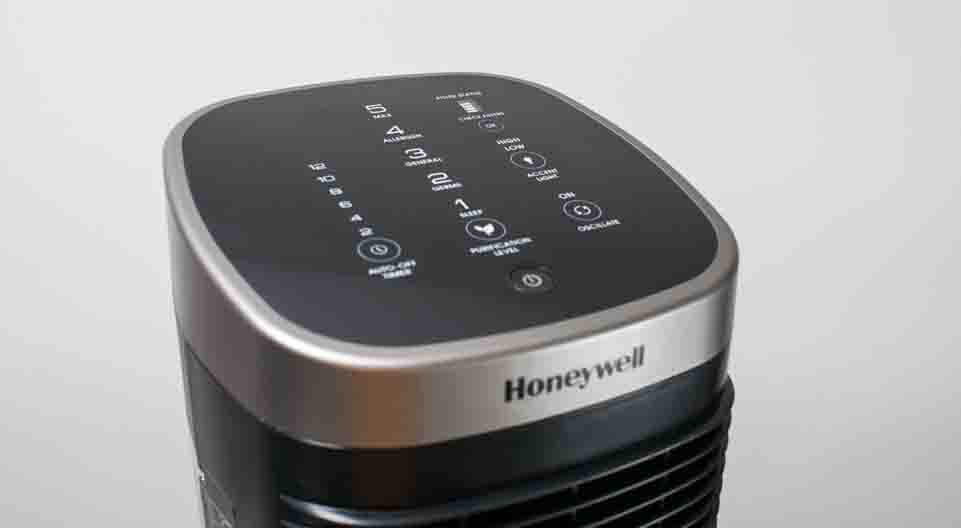
Compared to the HFD-120-Q, the AIrGenius 5 is much better built with higher quality parts. It also comes with a 5 year warranty.
Compared to other top rated units, the AirGenius 5 has similar build quality with similar quality parts. The only negative here is the fact that the AirGenius 5 oscillates while most other air purifiers do not. The oscillation motor is something extra that you have to worry about breaking on the AirGenius 5 that you don’t have to worry about breaking on most other air purifiers on the market (since they don’t oscillate).
Ease of Use
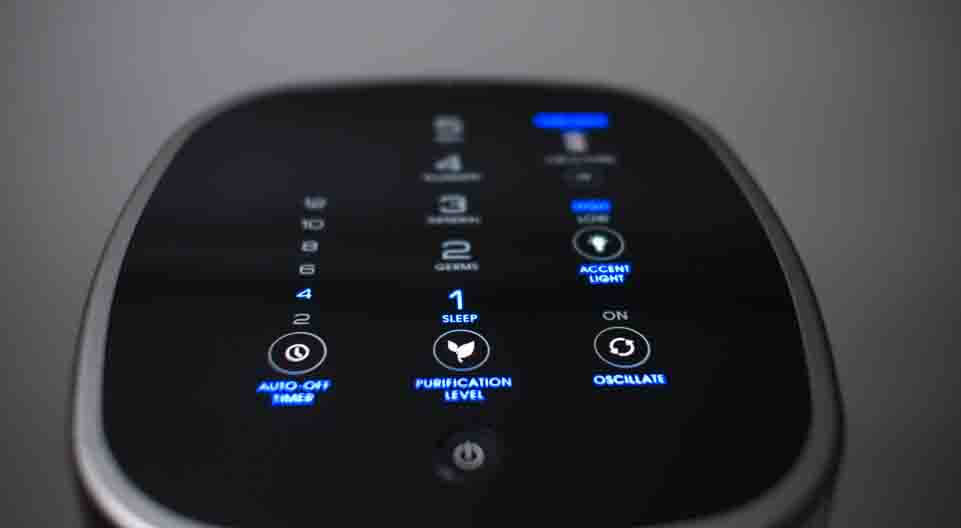
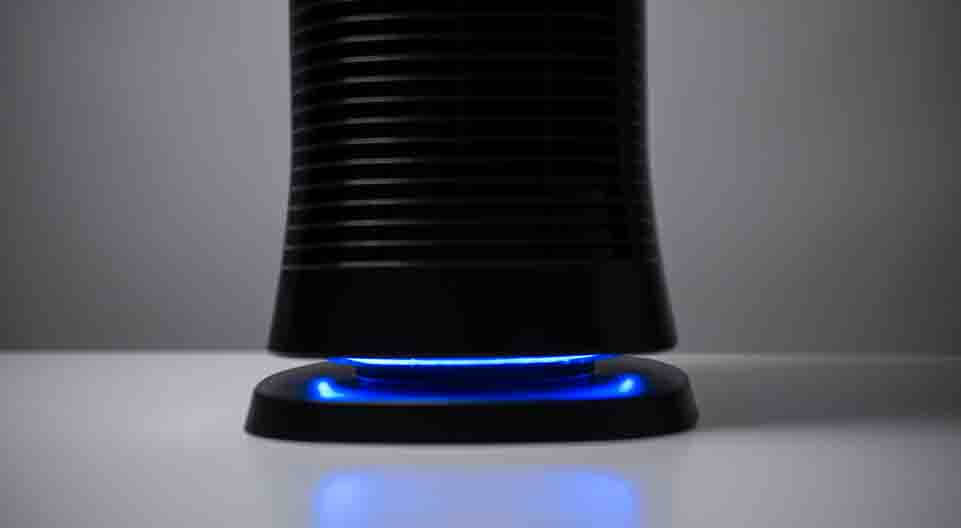
The display brightness on the AirGenius 5’s control panel cannot be adjusted. However, the accent light on the bottom of the unit can be adjusted to three different settings – high brightness, low brightness, and off.
Most other air purifiers on the market, including top rated units like the Coway Mighty, suffer from the same shortcoming – they have control panel LEDs that cannot be adjusted or turned off. This is an issue for users who like to use an air purifier in a dark bedroom and are also sensitive to lights being on in the room.
The AirGenius 5 is not a small air purifier. It’s fairly tall and fairly heavy, although it does have a small footprint because of the tower form factor.
The unit does come equipped with a timer but it does not have a remote or Smart functionality (it cannot be controlled wirelessly with an app). The aforementioned top rated Coway also comes with a timer and also does not come with a remote or Smart functionality. The Winix 5500-2 would be our recommendation here if a remote is important to you. The Coway AirMega series is recommended if Smart functionality is a priority for you.
Value
The AirGenius 5, at first glance, looks like a terrific long term value, if only because filter replacement costs are essentially $0 (assuming you don’t need any gas filtration and therefore don’t use the included replaceable carbon filter).
However, this cost savings does come at a price. That price is a higher initial cost and inferior filtration. Again, for a full rundown of why we prefer HEPA filters over permanent filters see our full guide on the subject here.
As to its high initial cost, it’s important that you’re aware that much better air purifiers are available at the same initial price as the AirGenius 5. This unit normally retails for around $200. At that price, you can purchase the Coway Mighty. It offers greater CFM, much better filtration, much better energy efficiency, and it’s also much quieter on lower fan speeds.
For about $50 less you can buy the Winix 5500-2. It again, offers greater CFM and much better filtration – not only does it come with a HEPA filter instead of a permanent filter, but it also comes with a much better carbon filter (for filtering gases) and a much better pre-filter. The Winix also comes with a remote and has similar energy efficiency and noise output to that of the Coway.
Both the Winix and the Coway are much better value options overall. Yes, they will cost more to own over time. But value is also about what you get for what you pay. And you’re simply getting much more (essentially a much better air purifier) if you go with either the Winix or the Coway over the AirGenius 5.
Add a Comment
Have a question or comment? Let us know below.

Comments (2)
Thanks for the review.
With supply chains being as they are now, not having to worry about replacement filters is a big plus for me. I am about to buy one of these units soon knowing I will likely be able to run it for 4-5 years without worrying about sourcing filters, not getting the best possible filtration is a compromise I'm willing to make
You're making a huge leap saying that the permanent filter will perform badly after washing it the first time. How do you know? Why not do a long term test? Or ask someone to send you an old filter or unit? These have been around quite awhile now. If you bought the unit outright like a reputable consumer testing company ought to, to be bias free you'd have the unit running in an employees home or test lab for a month, quarter or year and could do followup tests.
Also, many HEPA filters have arbitrary replacement times, 3 months, 6 months, 12 months, how is that filter performing in months 9-12?
Just something to chew on, many people need an inexpensive machine that has little to no ongoing cost, and these seem to really fit that bill compared with some of the machines with 4 filters and prefilters that need changing multiple times per year. Thanks or the in depth testing and product descriptions.